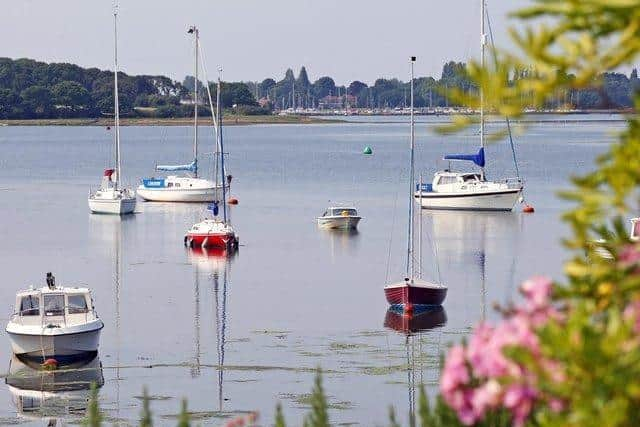Drugs, pesticides and E. Coli found in Chichester and Langstone harbours
and live on Freeview channel 276
Portsmouth and Brunel Universities teamed up with local interest grounds gathering hundreds of samples off the coasts of Hampshire and West Sussex by the Clean Harbours Partnership (CHP) campaign group last year as part of Project Spotlight.
Researchers analysed 288 samples and have so far detected more than 50 compounds across 22 sites. These include pharmaceuticals, and recreational drugs. The team also discovered pesticides, including simazine, propamocarb, imidacloprid, and clothianidin.
Advertisement
Hide AdAdvertisement
Hide AdProfessor Alex Ford, from the University of Portsmouth’s School of Biological Sciences, said: “We know there are billions of litres of sewage discharges annually around the UK but the impact of these discharges are not clearly understood.


“This project is enabling us to determine what chemical contaminants are in our marine life and coastal waters.
“We have found a large variety of prescribed and illegal drugs plus a variety of pesticides in coastal waters and marine organisms, such as crabs and oysters.
“This is important, because we know that aquatic ecosystems are under threat from pharmaceuticals and farming practices such as biocides and fertilisers.”
Advertisement
Hide AdAdvertisement
Hide AdA post storm seawater sample taken by CHP near an outflow pipe from Budds Farm treatment works, near Langstone, showed a reading of 380,000 colony forming units (cfu) per 100ml of E.coli, which is 760 times safe levels as set out under the European Bathing Water Directive. Levels above 500cfu/100ml signify a risk to human health.
Scientists will now compare the concentrations of these pollutants, found during last year's drought, to those taken at the same sewage discharge locations after combined sewer overflow (CSOs) discharges had been activated by rainfall.
CHP co-founder, Rob Bailey, said: “Thanks to community funding, we are starting to get an insight into the cocktail of chemicals polluting our sea water and their sources. Some pesticides seem to have been lingering for several years and the presence of partly digested antidepressants, drugs for type 2 diabetes and bladder infections is concerning. So little is known about their impact on marine life.
“The sheer scale of sewage discharges into our water courses has shocked the public. It looks like the debate is set to continue as we learn what’s in the water and how ineffective the authorities have been at managing such obvious threats to our precious environment.”
Advertisement
Hide AdAdvertisement
Hide AdDirector of Wastewater Operations at Southern Water, John Penicud, said: “Tackling chemicals and impurities, especially ‘forever chemicals’, is a global challenge that requires close collaboration of industry, agriculture, and other sectors including water companies and regulators.
“Our treatment processes already comply with stringent Environment Agency rules relating to the removal of contaminants, and we’re working with partners to explore how we can go further - through the use of cutting-edge technology and science, and investing in our network to improve treatment.
“This includes introducing ultraviolet filters, constructing a large pipeline to take flows away from Chichester for treatment at Tangmere to lessen any impact on the harbours; and a £22 million storage upgrade at Budds Farm, all of which help to protect and enhance water quality across our region.”